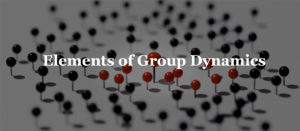The article titled, “The Fraud of the Student-Athlete Claim” is written by the Editorial Board of ‘The Opinion Pages’ of The New York Times, under which the aim of the author is to convey the message of two athletes students, regarding the way they are taught in classes. The article sheds light on two athlete students, named, Rashanda McCants and Devon Ramsay. The former was in the women’s basketball team of a university and the later was in the football department, as a player in the same university (Board). Through this article the suing case by these two students, of the National Collegiate Athletic Association is conveyed, underlining the issue that because of them, being part of the athletics, they are not provided with academic attention and academic oversight.
In order to let the readers know about what grievances are faced by the athlete’s students in their academic life, the article covers many facts and arguments, supporting the idea presented by the authors. As the author of the article is the editorial board of the famous web publishing page “New York Times”, the credibility of the author automatically becomes strong. Through his/her position in the publishing site, the authenticity and the credibility of the author and the article have fewer chances to be questioned. Therefore there might not be direct use of ethos in the article but the tone and confidence, with which the article is written, do reflect the use of ethos in the article to a great extent (Board).
As the information of the previous reports, facts and cases are also presented in the article, regarding the issue; the use of Logos is also quite obvious throughout the article. Few of the examples of Logos can be of the ‘report’ presented by the ‘University of North Carolina’ about the deception done to ‘thousands’ of students, in term of academic classes. Then another example of this could be the ‘expected’ time of ‘practise’ by an athlete in any university, which is stated around ‘50 hours a week’ (Board).
Therefore from a glimpse of the examples portrayed above, the presence of Logos in the article titled, “The Fraud of the Student-Athlete Claim” is apparent to the readers. In addition to this, the presence of ethos in the article is also clear. Now the last thing which must be checked in the article for grading it on the scale of an amazing piece of writing in to check that if emotional appeal is done by the author to the readers, for convincing them upon his concept, or not (Board).
Use of Pathos in the article is present but to a very little extent. Much emphasize is given to the words, trying to convince the readers about what is trying to convey. As for example the same sounding but better explaining words are used in the article to let the readers understand the definition or characteristics of actual ‘approaches’ demanded. As the lines from the article states (Board);
“Consider new approaches — bolder, broader approaches”
The above mentioned example is not only explaining the emotional appeal but also the Alliteration speech if wiring (Board). The overall tone used in this article is convincing and explanatory. Gathering of the facts and knowledge regarding the issue of injustice towards the athletes in term of the academic rights is one point which is tried to be conveyed through this article. The myths are laid down at some places that an athlete and a student, cannot go parallel at a same time as the demand of an athlete is contradictory to the demand of the student. Both requires much time and energy to be invested but at two entirely different angles, but this is the problem, addressed in the article, shedding light on the question that actually, ‘Do Athletes have the right to enjoy life as normal students or not?’ This question is directly and indirectly asked throughout the article and for a conclusion to this, therefore in my eyes the best suitable title for this article could not be anything else.
The author of this article used many types of writing, from a declaring tone to exemplifying tone, and then from a factual way of writing to the questioning way of writing, this article is an amalgamation of several ways of writing throughout from the start till the end. The main idea of the article is discussing the problem of athlete students and conveying this to the athlete association at one hand and to the universities on the other hand (Board).
Author used expository and persuasive way of writing, explaining and persuading the readers of the injustice towards the athlete students. Though the article is not organized and executed in a perfect manner but still the information included in it is authentic and reflects reliability. However in my eyes the article lacks some strong and supporting points of arguments to leave no chance of criticism or denial of the fact, as few loopholes are quite clear in the writing, which makes the concept, being trying to convey, quite shaky. If only this point is ignored from the article, it is an amazing piece of writing having a mixed and combined style of writing and rhetorical devices, without which any article seems incomplete to the reader (Board).
Works Cited
Board, The Editorial. The Fraud of the Student-Athlete Claim. 28 January 2015. 17 February 2015 <http://www.nytimes.com/2015/01/28/opinion/the-fraud-of-the-student-athlete-claim.html?_r=0>.



